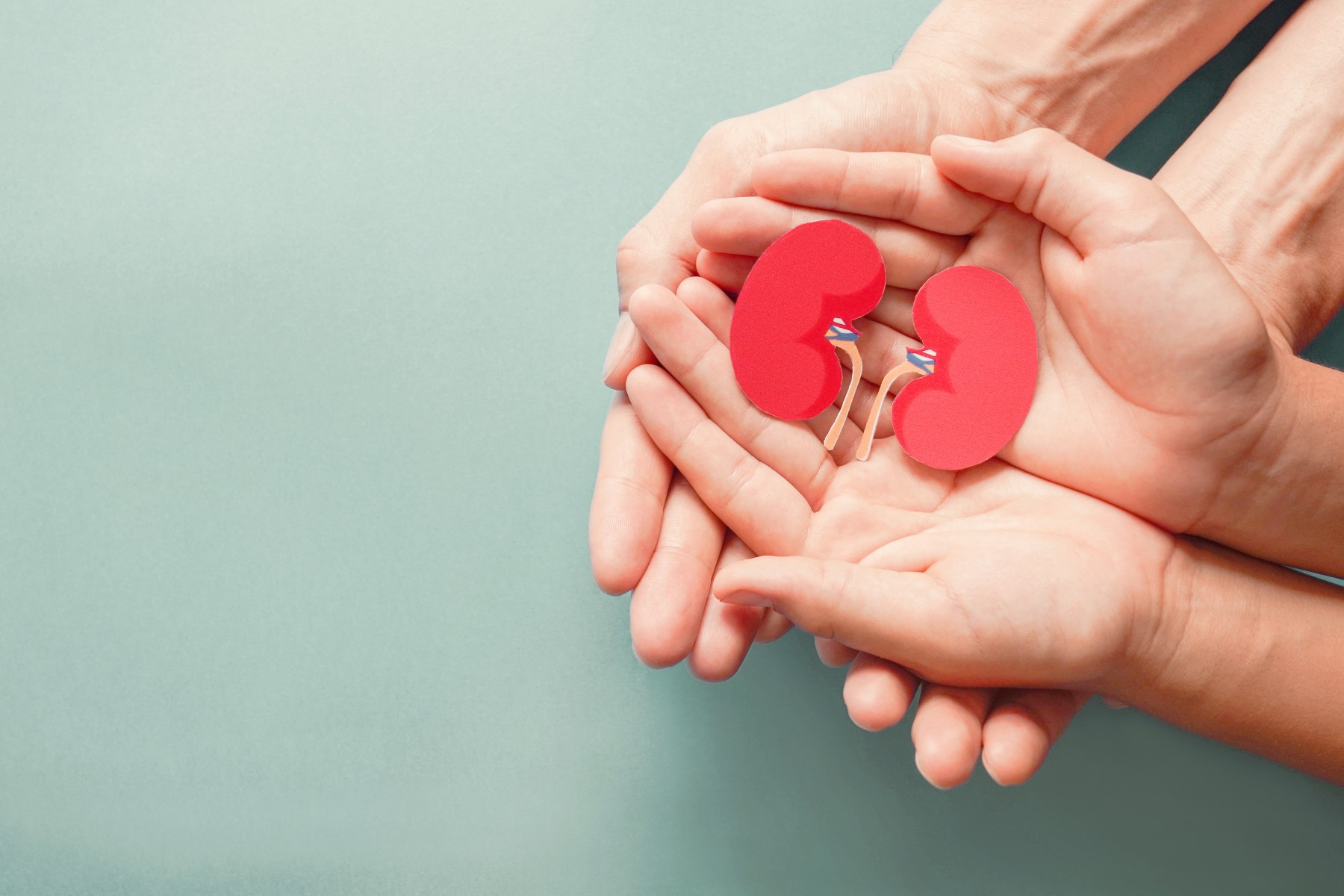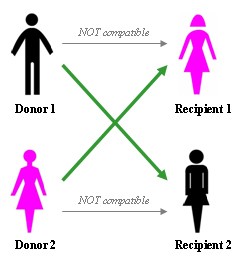No distance too far for the gift of life
A cross-country paired exchange kidney donation gave an Illinois man his life back

Quintin Porter is a walking miracle.
He’s battled back from multiple car accidents, cancer, an irregular heartbeat, a torn rotator cuff, carpal tunnel syndrome and more.
But the journey that brings tears to his eyes started with a random text message from an old flame and ended with him ditching his dialysis equipment for a new kidney. And along the way he learned about the technique that made it possible - paired exchange.
“It was kidney or coffin,” says the 56-year-old from Mahomet, Illinois.
Porter’s journey
A former stand-up comedian and radio executive, Porter has no problem recalling what got him to where he is today.
Toward the end of 2019, Porter says his health was “dragging.” His right arm hurt, and he knew something just wasn’t right.
“Your bloodwork is horrible,” Porter recalls his medical team telling him. “You’re at stage three of kidney disease.”
The father of two then went on dialysis, where an artificial filter does what healthy kidneys normally do – remove fluid and waste from your blood.
“You’re tethered to a machine,” Porter describes. “I wouldn’t wish it on my worst enemy.”
Dialysis gave Porter plenty of time to take up new hobbies like bird watching or sketching. Or watching the phone ding with the most important text message he would ever get.
Christy reconnects
The text on March 16, 2022, read, “Can you talk?”
It was from someone Porter hadn’t spoken to in nearly four decades: his high school girlfriend in Glen Ellyn, Illinois, Christy Stott. The 54-year-old retiree from Rockford, Illinois, wanted to catch up. But more importantly, she had seen Porter’s calls for a life-saving kidney.
“I got you. I’ll give you a kidney,” Porter remembers Stott telling him almost nonchalantly.
“I couldn’t believe it,” Porter adds. “It set off a whole bunch of emotions.”
“Sometimes people reach middle age and feel compelled to do something they’ve never done before,” Stott says. “Run a marathon. Write a novel. Something amazing and unexpected.
“I think that’s what this experience has been for me,” she says.
Porter and Stott seemed to be a perfect match if not for one problem: Stott is petite, and Porter is not. A honeybee and a bear, as Porter puts it.
But OSF HealthCare Mission Partners (employees) in Peoria, Illinois, knew another way.

Paired exchange
The nationwide paired exchange program involves a kidney donor and a recipient who aren’t compatible. When you add another incompatible pair, sometimes a match can be made. The donor from one set can donate to the recipient of the other pair, and vice versa. The swap makes a big X. The willingness of everyone to participate allows the process to get a jumpstart and makes optimal use of living donors. It can also significantly reduce wait time, which can stretch into years.
"This one was unusual,” says Dr. Christopher Johnson, a nephrologist with RenalCare Associates and medical director for OSF Kidney Transplant.
“Usually with kidneys, the size isn't the biggest thing. But in this situation, it was such a big difference that we thought we could get a better match for him. Her kidney was perfect for someone her size. It's going to take someone off dialysis and extend their life," Dr. Johnson says. "She's also blood type O. She's a universal donor. But the kidney was smaller than what would be ideal to the recipient. So we knew if we put this into a national exchange, we're going to benefit someone else.
"A lot of times people ask, ‘what's the blood type?’ And they want to know if they're blood type compatible,” Dr. Johnson adds. “I say this every time. I don't care what your blood type is. If you're not compatible, we'll find a trade. What's important about a kidney donor is that they're healthy and able to donate. No diabetes, healthy weight, no cancer or other problems. If there's an incompatibility, we can find a solution."
A research-minded guy, Porter looked into the paired exchange concept thoroughly before taking the leap.
“These nurses work so hard to give you such good, specific instruction that has derived from thousands of hours of treating actual patients,” he says.
So on October 4, 2022, Porter and Stott went to OSF HealthCare Saint Francis Medical Center in Peoria. She to give a kidney, which wound up in the Cleveland, Ohio, area. And he to get one, coming from Eris Diaz, who owns his own cooking business nearly 1,300 miles away in Miami, Florida. But when it comes to saving lives, no distance is too far.
“Of course, there is pain,” with transplant surgery and recovery, Diaz, now 25, says. “But the pain was for a good action and for Quintin’s happiness."
Lessons learned
Porter, Stott and Diaz are doing well in 2023 and are urging others to look into organ donation, either living or pledging to do so after you have passed away.
“I’m so happy for Quintin,” Stott says tearfully. “And I’m fine. I’m better for it. If I could donate again, I would.”
"Donation is important because you're sharing your life with people who need it, and that is beautiful," Diaz says.
“It’s a big sacrifice. But if you had the ability to save someone’s life, wouldn’t you?” Porter asks.

It’s a big sacrifice. But if you had the ability to save someone’s life, wouldn’t you?
Learn more
Nearly 100,000 people in the United States are waiting for a kidney transplant. Learn more about how you can make a difference on the OSF HealthCare and Donate Life America websites.


